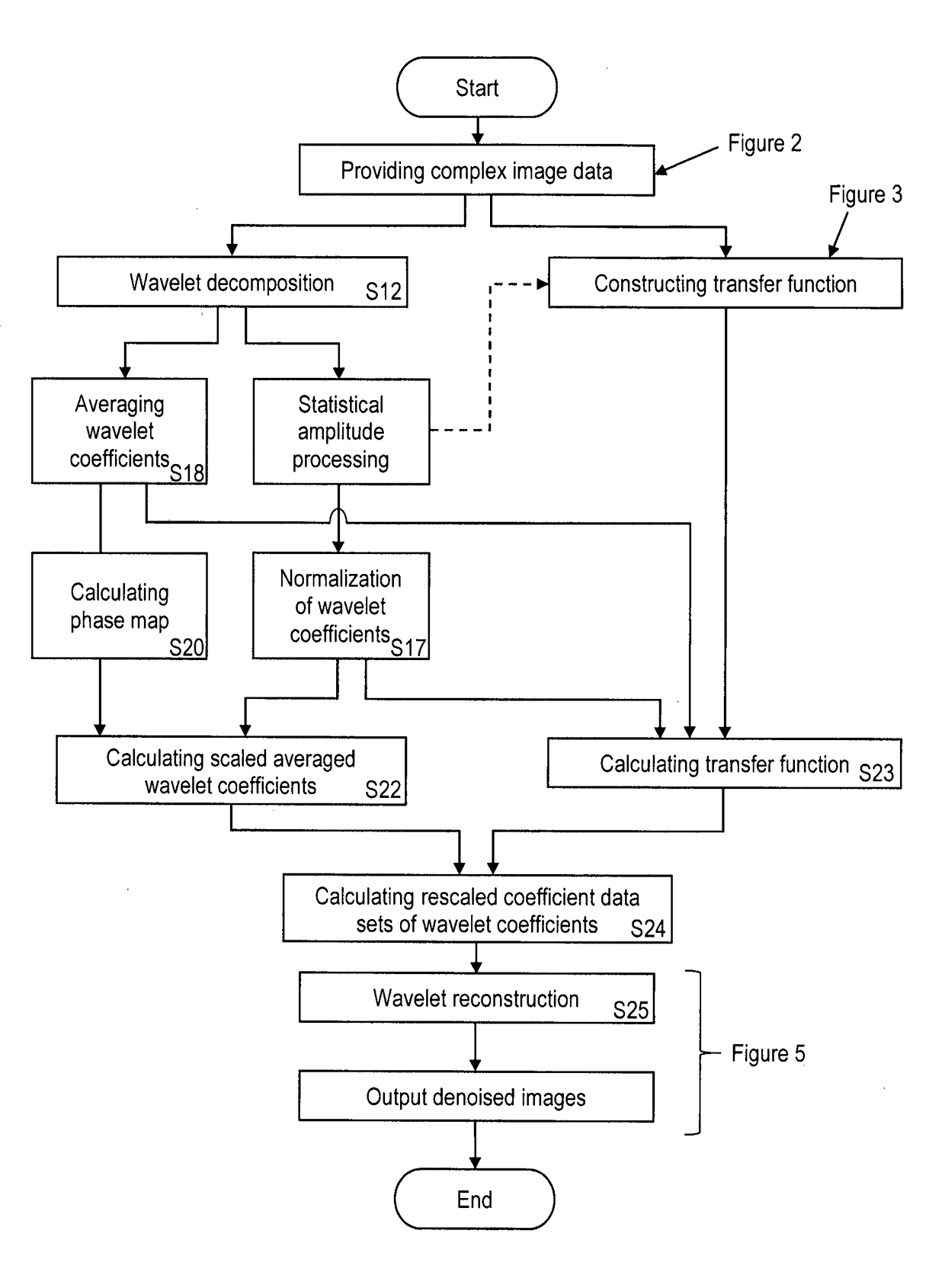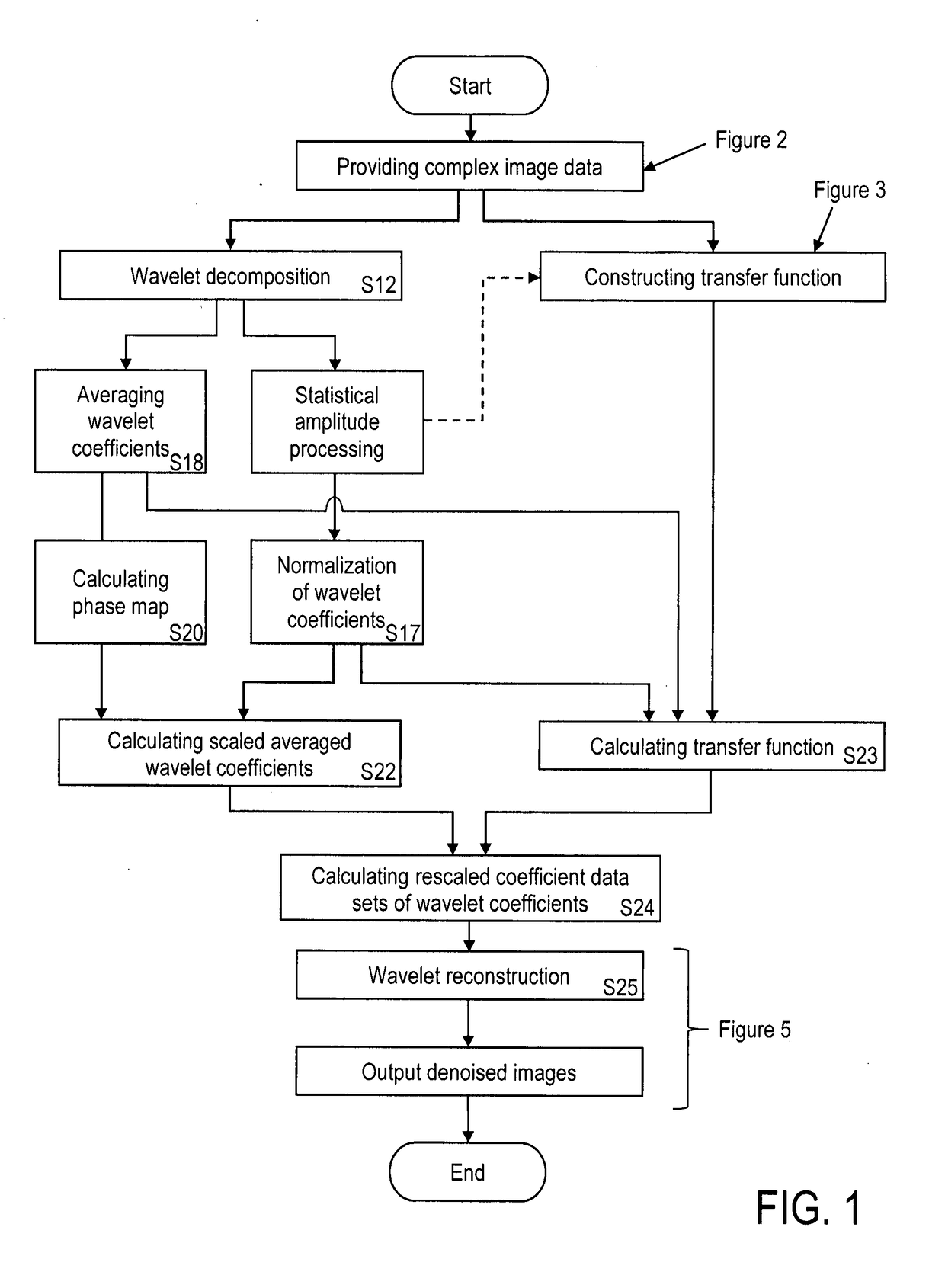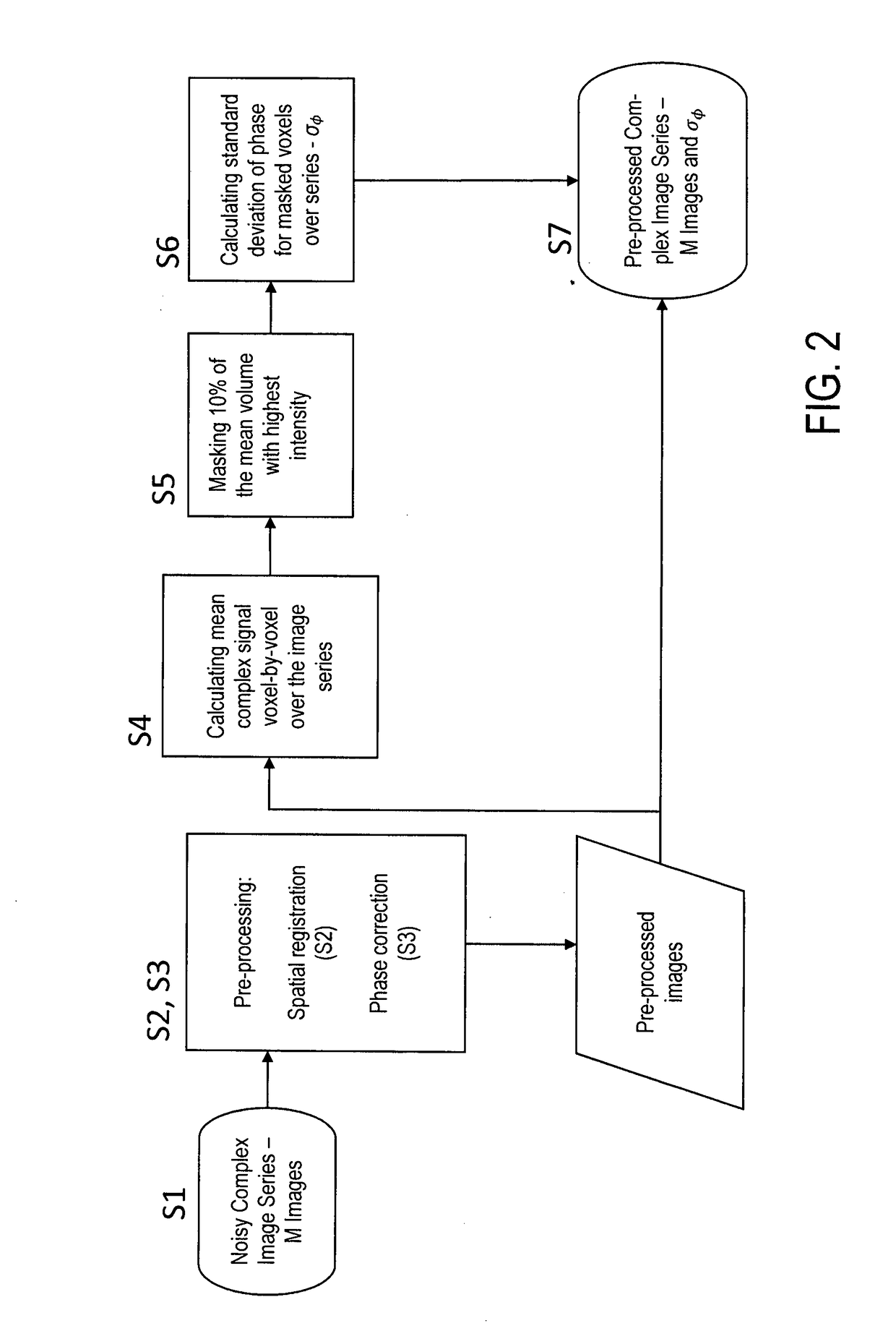Method and device for magnetic resonance imaging with improved sensitivity by noise reduction
a magnetic resonance imaging and noise reduction technology, applied in the field of image processing of magnetic resonance images, can solve the problems of inherently low sensitivity, low signal-to-noise ratio, high cost of strategies regarding the necessary hardware, etc., and achieve the effect of improving image quality, avoiding loss, and reducing nois
- Summary
- Abstract
- Description
- Claims
- Application Information
AI Technical Summary
Benefits of technology
Problems solved by technology
Method used
Image
Examples
examples of application
[0124]In a first example of applying the invention, the gain in SNR by application of ‘standard AWESOME’ to a series of 2D spin-echo MR images is demonstrated. In particular, the images of the series are assumed to be recorded as a function of the echo time (TE), whereby TE increases progressively over the image series in order to quantitatively map the transverse relaxation time, T2, after a voxel-by-voxel fit if the image intensity to an exponential, S(TE)=S(0) exp(−TE / T2). To assess the performance of the method of the invention in a a situation, where the underlying ground truth is known, the noisy images were simulated from a standard brain image by adding Gaussian complex noise to the real-valued data. For simplicity, a single exponential decay was assumed for each pixel. A total of 16 echo times (M=16) were used. The resulting images, which are used as input data to the method of the invention are shown in FIG. 7, which shows a series of simulated 2D spin-echo MR images demon...
PUM
 Login to View More
Login to View More Abstract
Description
Claims
Application Information
 Login to View More
Login to View More - R&D
- Intellectual Property
- Life Sciences
- Materials
- Tech Scout
- Unparalleled Data Quality
- Higher Quality Content
- 60% Fewer Hallucinations
Browse by: Latest US Patents, China's latest patents, Technical Efficacy Thesaurus, Application Domain, Technology Topic, Popular Technical Reports.
© 2025 PatSnap. All rights reserved.Legal|Privacy policy|Modern Slavery Act Transparency Statement|Sitemap|About US| Contact US: help@patsnap.com



